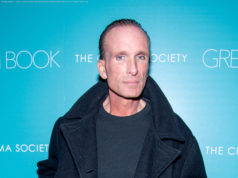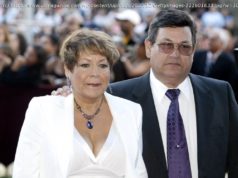There are lots of reasons you should be excited about this year’s Grizzlies.
The Memphis Grizzlies will catch you, the NBA — and maybe even themselves — off guard in 2018-19. If the team can stay healthy, Marc Gasol and Mike Conley will enjoy a supporting cast that’s the best fit for their talents they’ve ever had — and one that’s ideal for the pace-and-space era.
You heard it here first: Assuming the Grizzlies avoid the kinds of extraordinary injury issues that plagued the past two seasons, they will make the playoffs. If the Grizzlies are healthy in the playoffs, this season’s iteration of the team will be well-suited to upset any of the NBA’s current elite, so yes… they could win it all.
Memphis hasn’t seen Marc Gasol and Mike Conley play a meaningful stretch of games since Tony Allen and Zach Randolph’s departure fundamentally reshaped the landscape of the court by adding spacing and broadening lanes to the rim. Conley was playing the best offensive basketball of his career in the season before last year’s injury-wash. Marc Gasol started shooting threes just two seasons ago, and the Grizzlies have not been able to utilize this aspect of his game while paired with Conley at his best for any length of time.
In his 2017-18 League Pass Watchability rankings, analyst Zach Lowe said, «Gasol and Conley work the most subtly gorgeous two-man game in the league — a bob-and-weave, give-and-go symphony only possible when two genius players compile a half-decade of shared knowledge.» Lowe came to this assessment when Conley and Gasol played on a team that routinely offered the league’s worst spacing. This unparallelled two-man game will fuel many wins if it’s operating on a team that can space the floor, knock down open threes, and widen driving lanes to the rim.
The return of the Conley/Gasol two-man game, and the fate of the «win now» Grizzlies, mainly rests in Conley’s hands. His value can’t be overstated for Memphis: He’s an elite NBA point guard who can carry the team with his scoring and facilitate the offense as a floor general. The Grizzlies have no replacement for what Conley brings to the team, and they will not contend if he can’t play or if he’s seriously limited. Speaking of which, there’s a frightening stat that shows guards under a certain height experience a tremendous statistical drop off after a certain age, and Conley is a candidate to fit that pattern.
On his fantastic Patreon page, writer Matt Hrdlicka calculated a list of guards 6’3″ or under, age 29 or older, who were as good as Conley was in 2016-17. The list is only five people long, including Conley, and features Chris Paul, 2016-17 Kyle Lowry, and Chauncey Billups and Steve Nash. The majority of smaller guards not on this list experienced drop-offs in explosiveness and quickness, two things Conley will need in order to get to the rim, set up his teammates, and play at a level where it’s still reasonable for the Grizzlies to win.
Conley’s time in the league and the energy he’s had to expend for the Grizzlies to win stands out on Hrdlicka’s list, so the odds — and time — wouldn’t appear to be on Conley’s side. Which is to say, it may be now or never for these Grizzlies. The hope is that a healthier team, and new ball-handling and play-making personnel, will alleviate Conley’s burden and prolong his ability to play in the league. Speaking of new guys…
Kyle Anderson may end up being the biggest Grizzlies non-draft acquisition since Zach Randolph. Like Randolph, he’s contractually locked in to spend his prime years with Memphis. Anderson likely won’t have the same cultural impact as ZBo — nor the potent, ride-that-horse type of scoring, but he will be able to defend multiple positions against the best teams in the NBA, take over some ball-handling and facilitation responsibilities, and stick around for a while.
Anderson probably won’t be awarded accolades like Tony Allen got as the league’s best one-on-one defender, but he will be a better and more versatile overall team defender. It’s a role that’s better suited for combatting the pace-and-space Curry-Thompson-Durants and CP3-Harden team-ball that now dominates the league instead.
Plus, unlike Allen, who was often a liability on offense, Anderson can keep the offense running. Also, with Anderson potentially in the starting lineup, Conley won’t have to hit the gas as often, and can play off the ball. I can’t wait to see how Anderson looks in an expanded role.
Another development this season that may take many by surprise is Chandler Parsons. Ever since the ill-considered #Chancun Instagram, we’ve grown accustomed to Parsons maintaining a relatively clean PR presence. He’s now sharing Instagram videos of innovative workouts and gym shootarounds. But he kicked things up a notch this year by writing a «letter to Memphis» in the Players’ Tribune. Chandler basically tried to bury the hatchet with frustrated Grizzlies fans and detailed the impressive efforts he’s made to rehab his body. He says he woke up early and spent most of his days rehabbing and fortifying his body with a litany of exercises. He flew to Germany so doctors could inject his knees with enormous needles, using the same treatment that revived Eric Gordon’s career. Parsons certainly makes the case that this year will be different, and if training camp and preseason have been any indication, he might be telling the truth. He’s running the court well, knocking down threes, and even played both nights in a pre-season back-to-back.
Parsons wants to prove that he still has it, and he appears to be on track to becoming a reliable wing that can provide scoring and playmaking off the bench. If his health and ability return to near what the Grizzlies signed him to be, the Grizzlies could start either Parsons or Anderson, depending on the defense and shooting necessitated by the opponent. So, Kyle Anderson may be the biggest acquisition since Zbo… unless it’s year-three Chandler Parsons pulling an Eric Gordon. If that’s the case, look for Conley and Gasol’s efficiency and production to spike in ways not unlike the success seen by other stars around the league who are teaming up in threes and fours.
The Grizzlies also appear to be on the verge of starting their best shooting guard since Courtney Lee. Garrett Temple, the likely starter, is a reliable veteran and a classic 3-and-D player. He will also help the Grizzlies reclaim their strong defensive identity.
Don’t sleep on Wayne Selden, though. He’s another player that could catch people off guard this season. Analysts pinned him for a potential big breakout season at the beginning of last year, but he was sidelined due to the same quad-injury that plagued Kawhi Leonard. Selden’s sample size from when he was healthy with the Grizzlies is tiny, but he shot very well from three and packed a lot of athleticism and rim-attacking ability into the two spot. It’s another small sample size, but Selden thrived when he was given the opportunity in a preseason game against the Pacers, scoring 16 points and dishing nine assists in 27 minutes of play. Selden could provide more of a scoring punch in the starting lineup, or serve as a backup point guard behind Conley.
Having options for backup point guard is another overlooked development that will make this team more successful than most have predicted this season. The Marc & Mike Grizzlies have frequently suffered from not having a backup primary ball-handler that can facilitate the offense. By adding a veteran backup point guard like Shelvin Mack, and ball-handlers like Kyle Anderson, Conley won’t have to shoulder the floor general burden alone.
JaMychal Green is another player who could surprise people with his effort and production this season. It’ll be a contract year for the power forward, and he should see better looks more often from deep with the makeup and health of this year’s roster. Green’s steady ability to defend the four and space the floor gives rookie Jaren Jackson Jr. plenty of time to adapt to the NBA, which is nice, because overextended young big men tend to get injured.
Speaking of Jaren Jackson Jr.






